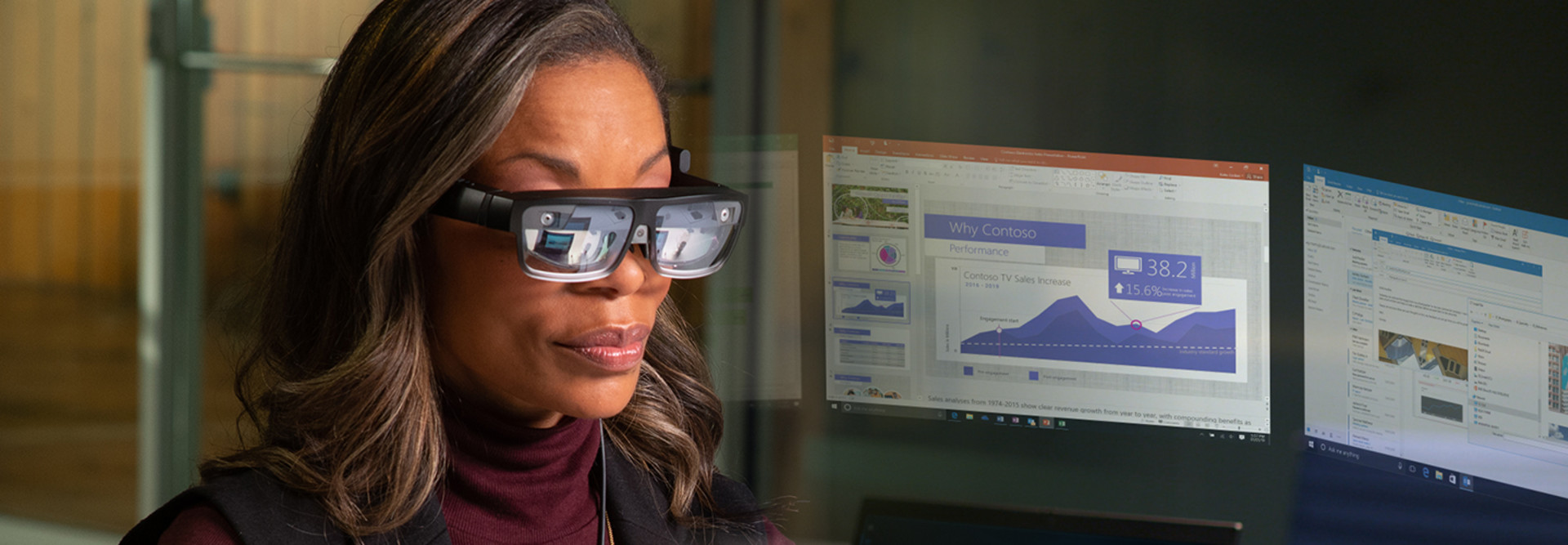Augmented Reality Hardware on the Horizon
Headsets and accompanying technologies are available now, but higher-performance models will be available within the next year.
Lenovo’s ThinkReality A3, designed specifically for enterprise customers, is expected this summer. Lighter and designed for longer wearability than previous products, the smart glasses work in conjunction with a ThinkPad workstation or specific Motorola smartphones.
“The A3 is more content-focused,” says Mike Lohse, Lenovo’s hardware product manager for commercial AR and VR. “Imagine a person going on a sales call with this immersive tool to create a better experience. They can share something tinier than a grain of rice, like a stent, by blowing it up to 6 feet across and pointing out the features. Similarly, if they’re selling an industrial pumping station, they can shrink it down and focus on specific features and functions.”
Other HMDs and smart glasses include Google’s Glass Enterprise Edition 2 and Microsoft Mesh, which uses the company’s HoloLens technology to transport users virtually into one another’s physical environments.
“Microsoft Mesh is a mixed reality platform that powers collaborative experiences with a feeling of presence, meaning users feel like they are physically present with each other, even when they are not,” says Greg Sullivan, director of mixed reality at Microsoft. “People can interact with 3D content or engage with each other through Mesh-enabled apps across any platform or device, including Microsoft HoloLens, VR headsets, smartphones, tablets or PCs.”
MORE FROM BIZTECH: How AR and VR can revolutionize corporate training.
Although Microsoft Mesh is still in preview, current customers can download the Microsoft Mesh app for HoloLens 2 and request access to a new Mesh-enabled version of AltspaceVR. This will allow companies to hold 3D virtual meetings with enterprise-grade security features.
The Future of Head-Mounted Displays
As development of HMDs accelerates, Abbruzzese sees the market for these devices growing quickly for enterprise customers.
“Our forecasts show that enterprises are the overwhelmingly dominant buyers of AR headsets for the next several years, but starting in 2023, greater consumer demand will start to take hold,” he says.
Abbruzzese predicts automation will be the next big innovation for AR HMDs.
“Most industries are already using wearable AR for data logging, such as capturing the expertise of trained and seasoned workers while they’re working,” he says. “What comes next is an automated assistant that can take that content and push it out. It only needs to be captured once and then targeted to others when they need it. It’s just-in-time training. Some of this is happening today, but automated assistance will be more ubiquitous three to five years down the line.”











